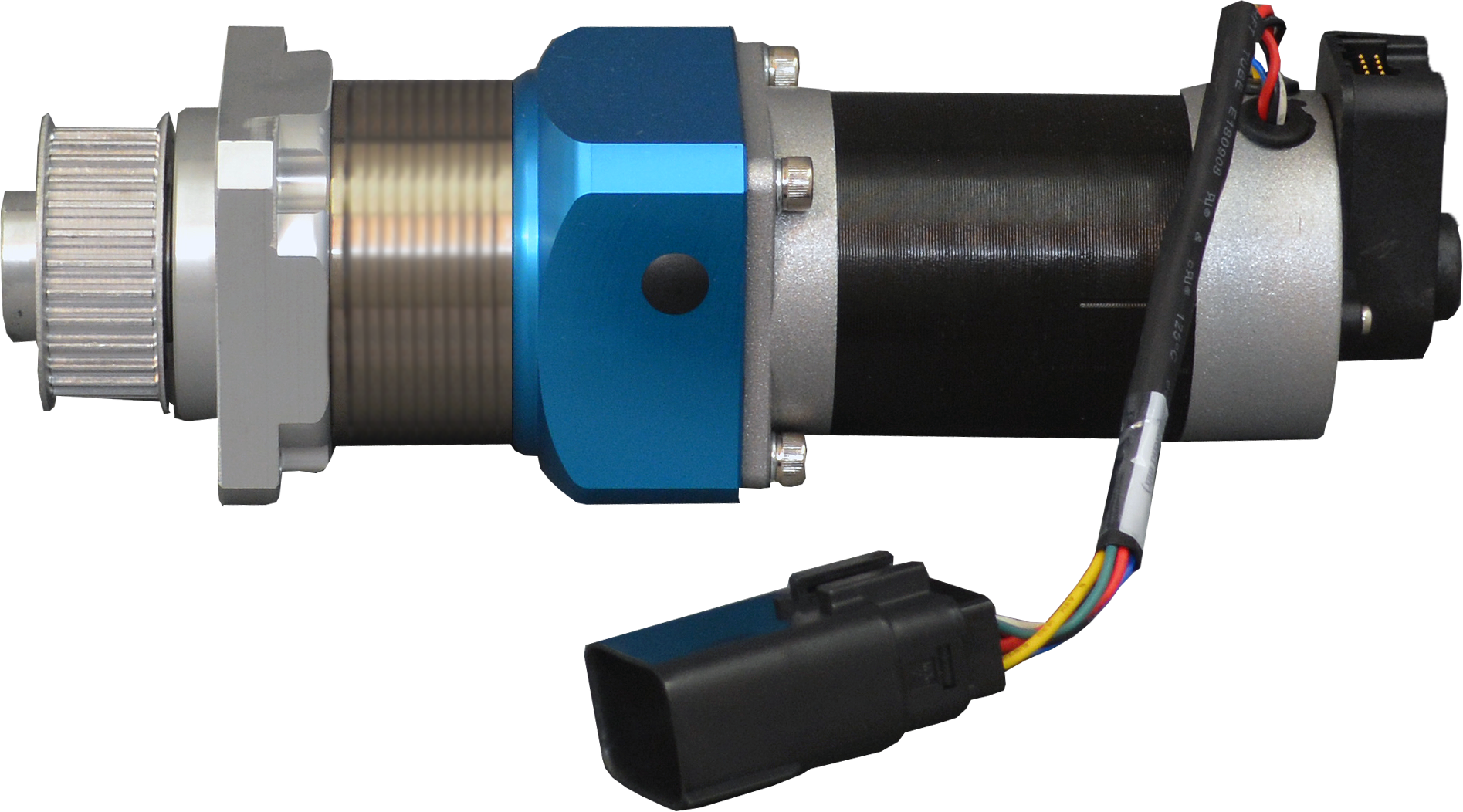
How to select the right motion control system for your application
The abundance of motion control products on the market today may overwhelm designers looking to source new solutions for their systems. When multiple product options exist to fulfill given design requirements, how can designers be sure they are choosing the best fit for their needs?
If you're asking yourself, "which type of motion control system do I need?"…
Start by narrowing down the power requirements of the system and analyzing the inertial load the motor will have to overcome:
Power is a product of torque and speed. Understanding and defining the required power will narrow down the breadth of options, eliminating motors that are unable to provide enough power and ruling out motors that would provide too much.

Once power requirements are defined, calculate the inertia of the system. Ensure that the load inertia is within 30:1 of the rotor inertia of the motor (or 10:1 for stepper motors). Increase the size of the motor or add a gearbox to the system to leverage mechanical advantages of gearing to the rotor

Consider the available supply voltage and current for the system. 110VAC, 220VAC single phase, transformers, power supplies, and batteries are common, but each will have their own constraints. These voltages will limit the motor selection and driver selection in the system.
Understand the use-case of the motion system:
Certain types of motion systems are better-suited for particular use-cases than others. Consider the use-case of your application to determine the best type of motion control system for your requirements:
- Point-to-Point Positioning
- Consider Stepper or Servo Systems
- Speed Control
- Low Speed Ranges (1-5 RPS):
- Consider Steppers, Brushed Gearmotors, BLDC Gearmotors
- Mid Range Speed (5-15 RPS):
- Consider BLDC Gearmotors, Brushed Gearmotors, or Servo Systems
- High Speed Ranges (15 RPS+):
- Consider BLDC motors or Servo Systems
- Torque Control / Current Limiting
- Consider BLDC, BLDC Gearmotors, or Servo Systems
Next, define higher-level requirements of the system to further narrow the product offering
- Duty Cycle
- Continuous
- Intermittent
- Motion Profile Requirements
- Acceleration and/or Deceleration Rates
- System Dynamics
- Sources of Friction
- Inertial Back-Drive / Stop Time
- Torque Margin
- Factor of Safety should be applied to Torque, at least 50% margin suggested
- Speed or Position Accuracy
- Consider Closed Loop BLDC, Steppers, or Servo Systems for high accuracy applications
- Installation environment
- IP Ratings
- Distance between motor and control box
- Space Constraints
- Consider Integrated Motors/Drivers/Controllers for tight footprints
- Customized solutions vs. off-the-shelf products
- Smaller volume users are usually better served designing in standard products for cost and ease-of-use
- Cost-Benefit Analysis
- Gearing is expensive and space-consuming, but adds advantages to heavy load applications. Consider the cost of a larger motor and driver vs. a smaller motor with gearing.
- Customized solutions add lead times and often require Minimum Order Quantities (MOQs), but can offer a benefit for application-specific requirements.
- Anaheim Automation offers quantity discounts in both blanket orders and single release orders. Consider the price breaks when placing orders to reduce the per unit price in your application
Helpful Design Tips:
- All mechanical systems exhibit some frictional force. When sizing a motor, remember that the motor must provide enough torque to overcome the inertial load and any system friction. When selecting a motor/driver/controller combination, remember that the capacity of the motor must exceed the sum of the load requirements.
- The torque that any motor can provide varies with its speed. Individual speed/torque performance curves should be consulted by the designer for each application. The torque‐to‐inertia ratio (measurement) determines how quickly a motor can accelerate and decelerate its own mass. Motors with similar torque ratings will have different torque‐to‐inertia ratios as a result of varying construction. Certainly, there will be different ratios between manufacturers with the same torque ratings.
- Whenever possible, choose a driver/controller that is capable of providing more torque than what is absolutely necessary. This torque margin allows for mechanical wear, lubricant hardening, instantaneous disturbances in load, and other unexpected friction in the system.
- Resonance effects can lower a motor’s torque slightly at some speeds. Therefore, selecting a motor driver that provides at least a 50% margin above the minimum required torque is ideal. More than 100% margin will likely prove too costly, and is not necessary for good system performance.
- To obtain the best cost‐performance in a system design, one should expect to spend time in experimentation. Carefully select all components in the design for the desired outcome. Experimentation for motor sizing is almost always necessary due to dynamic changes in system friction and inertia (load anomalies), which are difficult to calculate accurately. Motor resonance effects can also change once the motor is coupled to its load.
Pre-matched Solutions
Once you have determined the best technology for your application, you can further simplify selection of system components by choosing a pre-matched solution. Pre-matched options include:
- Stepper Motors with Integrated Drivers/Controllers
- Brushless Motors with Integrated Speed Controllers
- Servo Motors with Integrated Drives
- Complete Servo Systems, with Pre-matched Motor, Drive, and Cables
- Complete Stepper Packages with Motor, Driver/Controller, and Cables
Pre-matched solutions don't only make component-matching a breeze – they also simplify installation and offer cost-savings.
Custom Motion Control Solutions
There are occasions when standard, off-the-shelf components cannot meet system requirements, and designers may need a customized solution. Customization may be as simple as modified mounting dimensions, sheet metal, color, or private-labeling. Other times, a design may require custom motor shafts or windings, footprint matching, or more to meet an ideal specification. Proprietary designs are usually recommended for those with mid to large quantity requirements.
Value-added assemblies may also elevate standard components so that they can meet design requirements. For example, this motor has a mounted gearbox, pulley, encoder, and customer-specified connector:

If you think your application may require a customized solution, feel free to Contact Us to discuss your design requirements. Since 1966, we have helped customers across a wide spectrum of industries – with diverse application needs – source the right solutions for their designs. Industries and application types include: medical diagnostics and devices, food, cosmetics or medical packaging, labeling, tamper-evident requirements, cut-to-length applications, assembly, conveyor, material handling, robotics, special filming and projection effects, inspection equipment, security devices, pump flow control, metal fabrication/CNC machinery, process control, and equipment upgrades.
Need Application Assistance?
Whether you need help specifying standard components to meet your system goals, or your design requires a custom solution, our application engineers are ready to offer their expertise.
.PNG)
